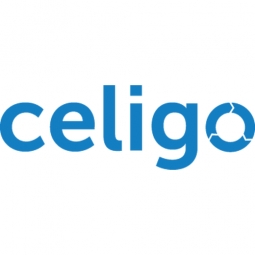下载PDF
Life Interiors: Leveraging IoT Integration for Competitive Advantage
技术
- 应用基础设施与中间件 - 数据交换与集成
- 应用基础设施与中间件 - 中间件、SDK 和库
适用行业
- 消费品
- 零售
适用功能
- 销售与市场营销
- 仓库和库存管理
用例
- 库存管理
- 拣选/分拣/定位
服务
- 系统集成
挑战
Life Interiors 是澳大利亚领先的家居经销商,在扩大业务和地点时面临着重大挑战。由于信息孤岛,该公司正面临部门之间缺乏可见性的问题。这导致内部沟通效率低下,有关库存水平、订单状态、客户信息和交货时间的电子邮件难以跟踪,并且容易出现人为错误。该公司需要一个能够将 NetSuite ERP 数据与 Magento 电子商务平台集成的解决方案。然而,如果没有 IT 团队,解决方案必须简单且用户友好,使业务线用户能够在看似不兼容的平台之间快速连接复杂的工作流程。 Life Interiors 比其更成熟的竞争对手更精简,需要一种经济高效的解决方案,该解决方案可以提供公平的竞争环境,并且足够灵活,可以加载新应用程序,这些应用程序将在未来的数据流模式中变得更加突出。
关于客户
Life Interiors 是澳大利亚领先的家居经销商,由 Geoff Karam 和 Basil Karam 共同创立。该公司从世界各地采购和进口优质现代家具,并在短短十二年内发展成为澳大利亚最大的家居经销商之一。 Life Interiors 的业务和运营管理流程涵盖多个平台和应用程序,每年销售额达 1,500 万美元,订单量超过 20,000 个。该公司在没有 IT 部门的情况下运营,并依靠集成工具将其标准 NetSuite 平台转变为强大的中心,并从中控制整个运营。
解决方案
Life Interiors 采用了 Celigo 的 NetSuite-Magento 集成解决方案,事实证明该解决方案比其他可用工具成本更低、更灵活且可扩展。该解决方案使 Life Interiors 能够跨不同渠道协调库存、管理订单状态、客户信息、库存、定价和交货时间。业务的成功整合促使 Life Interiors 探索其他可能的整合。他们使用 Celigo 的 iPaaS 解决方案来集成其供应商管理系统、连接其在线商店,并在任何特定时刻提供可靠、准确的供应链快照。他们还使用 Celigo 的集成解决方案与 Google Local 合作,为其库存本地购物功能提供支持、管理其贸易门户,甚至管理营销活动。
运营影响
数量效益
相关案例.
.png)
Case Study
Improving Vending Machine Profitability with the Internet of Things (IoT)
The vending industry is undergoing a sea change, taking advantage of new technologies to go beyond just delivering snacks to creating a new retail location. Intelligent vending machines can be found in many public locations as well as company facilities, selling different types of goods and services, including even computer accessories, gold bars, tickets, and office supplies. With increasing sophistication, they may also provide time- and location-based data pertaining to sales, inventory, and customer preferences. But at the end of the day, vending machine operators know greater profitability is driven by higher sales and lower operating costs.

Case Study
Improving Production Line Efficiency with Ethernet Micro RTU Controller
Moxa was asked to provide a connectivity solution for one of the world's leading cosmetics companies. This multinational corporation, with retail presence in 130 countries, 23 global braches, and over 66,000 employees, sought to improve the efficiency of their production process by migrating from manual monitoring to an automatic productivity monitoring system. The production line was being monitored by ABB Real-TPI, a factory information system that offers data collection and analysis to improve plant efficiency. Due to software limitations, the customer needed an OPC server and a corresponding I/O solution to collect data from additional sensor devices for the Real-TPI system. The goal is to enable the factory information system to more thoroughly collect data from every corner of the production line. This will improve its ability to measure Overall Equipment Effectiveness (OEE) and translate into increased production efficiencies. System Requirements • Instant status updates while still consuming minimal bandwidth to relieve strain on limited factory networks • Interoperable with ABB Real-TPI • Small form factor appropriate for deployment where space is scarce • Remote software management and configuration to simplify operations

Case Study
How Sirqul’s IoT Platform is Crafting Carrefour’s New In-Store Experiences
Carrefour Taiwan’s goal is to be completely digital by end of 2018. Out-dated manual methods for analysis and assumptions limited Carrefour’s ability to change the customer experience and were void of real-time decision-making capabilities. Rather than relying solely on sales data, assumptions, and disparate systems, Carrefour Taiwan’s CEO led an initiative to find a connected IoT solution that could give the team the ability to make real-time changes and more informed decisions. Prior to implementing, Carrefour struggled to address their conversion rates and did not have the proper insights into the customer decision-making process nor how to make an immediate impact without losing customer confidence.

Case Study
Digital Retail Security Solutions
Sennco wanted to help its retail customers increase sales and profits by developing an innovative alarm system as opposed to conventional connected alarms that are permanently tethered to display products. These traditional security systems were cumbersome and intrusive to the customer shopping experience. Additionally, they provided no useful data or analytics.







